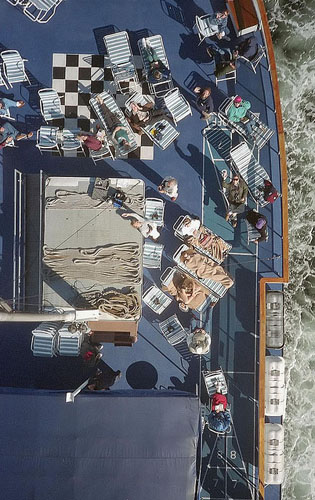 The most significant hazard when flying a kite is arguably that of interfering with low-flying aircraft, helicopters, microlights, hang gliders etc. No kite flier or pilot would wish to be involved in any form of entanglement or the potential loss of life. National regulations exist in many countries to control minimum flying height for aircraft and maximum height for kites. Height restrictions are commonly around 500 feet but it is essential to be aware of those that apply locally. Obviously such regulations must be carefully observed. It is also essential to be aware of local air traffic and avoid airport approaches, known flighpaths etc.
The most significant hazard when flying a kite is arguably that of interfering with low-flying aircraft, helicopters, microlights, hang gliders etc. No kite flier or pilot would wish to be involved in any form of entanglement or the potential loss of life. National regulations exist in many countries to control minimum flying height for aircraft and maximum height for kites. Height restrictions are commonly around 500 feet but it is essential to be aware of those that apply locally. Obviously such regulations must be carefully observed. It is also essential to be aware of local air traffic and avoid airport approaches, known flighpaths etc.
Site selection is an important consideration not only from the point of view of the photography but also when considering safety. In general, keep away from property and people and allow clear space both up and down wind from the tether point. Space downwind facilitates walking down the rig where necessary, and space upwind allows the kite-flier to move backwards in the event of a significant decrease in wind strength. This may allow sufficient time to be gained to recover the rig safely.
Most kite-flying aerial photographers value their rig and hope to avoid accidents. The loss of a camera and associated equipment is bad enough but dropping a few pounds of metal from several hundred feet above the ground is potentially much more serious when people or property are in the area. Serious accidents can be caused in such circumstances. It is also possible to anger of frighten people by enveloping them unexpectedly in fabric or tangled lines. The obvious way to eliminate such risks is to select flying sites well away from people and property unless you are an experienced operator and absolutely confident of the conditions and your rig.
As with all flying machines, it is important to undertake proper maintenance and inspections before flying. The details of the mounting mechanism are an obvious place to start, but don't forget to check regularly the condition of the fabric seams, the state of wear of the lines and tether etc. A safety line run between camera and tether is a useful way to "catch" the camera when the worst happens.
People who fly kites, particularly of larger sizes, may be exposed to a number of hazards. Some of these hazards are fairly obvious but a few are more subtle and hence sometimes overlooked. Among the most often ignored hazards are the various aspects of exposure to the sun. Kite-fliers inevitably spend long periods gazing upwards into the sky and hence exposing their skin and eyes to higher than normal doses of ultraviolet and very bright light. This can, over a long period, lead to skin and eye damage. It is therefore wise to wear adequate suncream and sunglasses as well as clothing suitable for the local conditions.
Clearly the local weather conditions are important not only to successful flying but also to safe operation of the kite. Remember that safety concerns extend to the general public as well as those operating the kite. A suitable knowledge of local weather conditions is important. Consult with people who may have local knowledge and make a visit to the selected site before flying a kite. Coastal conditions may be changeable so use local weather forecasts where they are available. Where doubt exists, try flying a small kite at the relevant time of day before embarking on more ambitious work.
Wind strength can change very rapidly - ask any local sailor! Once a large kite is airborne, it can take some time to bring it down. A sudden increase in wind strength may make it impossible to control or bring down a large kite, and injuries may result. It is good practice to wear leather gloves and position oneself close to an object to which a large kite can be safely tethered. Where necessary, the kite can then be tied down while you "walk it down" - ie walk out along the tether, gradually bringing the cord down to ground level. Some operators use a pulley wheel to facilitate this process. Be aware that as the tether is lowered it becomes a ground-level hazard for pedestrians, cyclists etc.
It is not wise to fly kites when electrical storms are present in the area. Such storms are often accompanied by unstable wind and weather conditions, and there is the possibility (much debated) of a lightning strike. It is equally unwise to fly a kite close to power lines.
Children are almost always interested when kites are flown and some may be attracted to the kite-fliers side. Encouraging interest and answering their questions is fine, but do not allow children to handle the tether of a large rig. A change in wind strength of direction may result in a significant injury.








